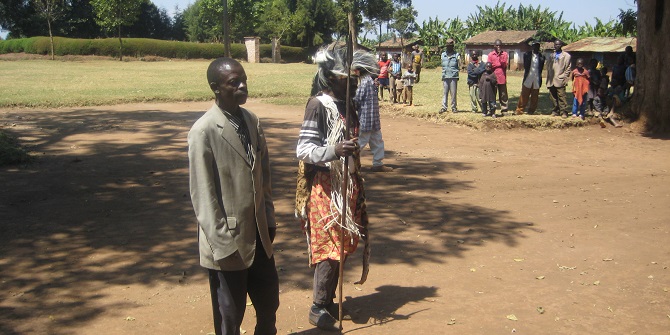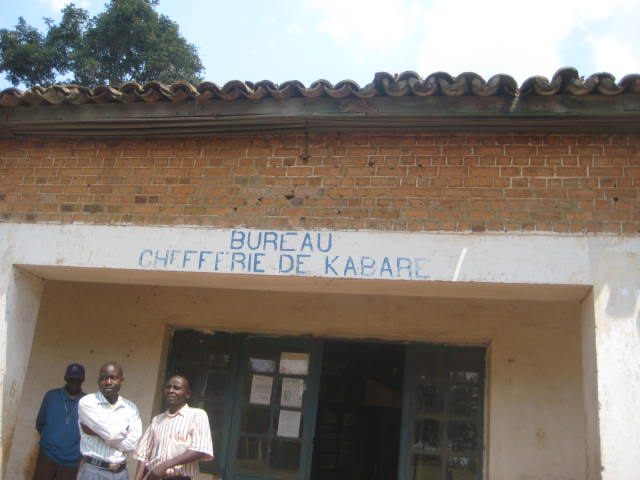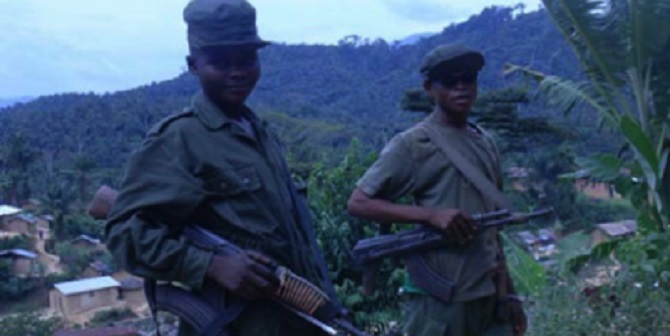
Traditional chieftaincy has been a favoured topic of research since the colonial era in scholarship on the African continent, and it has generated a lively debate about its characteristics. For some, it is a despotic residue of colonial rule, invented and imposed by colonial regimes to facilitate its rule, which has largely survived as source of power and domination. Others tend to see chieftaincy as an expression of authentic African political institutions and culture. More recent scholarship, however, recognises the manifold forms, dynamics features, and unique trajectories of traditional chieftaincy in different contexts.
In a recent study, which is part of a recent special issue on customary authority in Central and East Africa, we explore how rapid political changes and violent conflict affect the position and role of customary chiefs in eastern Congo. We show that during these trying times, the institution of chieftaincy has remained salient, and that it continues to be a prominent feature of the local institutional and political landscape. Why is it that the institution of traditional chieftaincy has preserved much of its authority in eastern Congo, where other instances of public authority have lost most of theirs?
The salience of chiefs, we argue, is conditioned by a generalised belief in the authenticity and sacredness of chieftaincy and by the ethno-territorial imaginary of the Congolese state. This belief and imaginary were mainly produced during the colonial era. The colonial authorities imbued chiefs with wide-ranging authority in demarcated ethnic territories – so-called ‘indigenous chieftaincies’ –, and framed the figure of the ‘traditional chief’ as the archetype of authentic African political institutions. This, despite the fact that this monarch-like figure, in most cases, was very much at odds with indigenous political systems. Importantly, however, these ‘invented traditions’ were not invented from scratch, but drew on existing indigenous beliefs and myths.
The colonial model of ‘traditional chieftaincy’ has not been dismantled in the post-colonial period. Instead, it was integrated into the structures of domination and rule of the post-colonial state. Rural areas are still largely organised into ‘chieftaincies’, and chiefs continue to be recognised by state authorities. As a result, they are granted extensive rights and privileges. Furthermore, customary elites reproduce the sacredness of the institution through rituals and ceremonies, and through the reproduction of myths of origin, which frame the ancestors of the ruling dynasty as the founders of the ‘chieftaincy’. These aspects imbue the institution of traditional chieftaincy with charisma and enable customary chiefs to exercise authority in a wide range of domains of public life.

Congo’s protracted conflict has intensified the struggle over local public authority, especially in rural areas. Armed groups, chiefs, state services, civil society associations, religious and development organisations, the UN peacekeeping mission, and international aid agencies are all involved in intense struggles for the right to rule over territories, populations and resources, and to deliver public services. Our study shows that customary chiefs are key actors in these power struggles. Given the concentration of symbolic and material resources in the office of ‘traditional chief’, the occupation of this office is one of the most important stakes in the struggles for power. This creates a paradox: the concentration of power and wealth in the position of the traditional chiefs renders their position fragile as competitors from within the royal family – usually brothers from a different mother – and their allies, constantly seek ways to capture the throne.
This competition over customary authority is not new. Records show that it has been ongoing since the colonial era. Since the start of the Congo wars in 1996, this has changed in several ways. The loss of authority of the central state made this competition more open. New powerful politico-military actors became involved, and their involvement made this competition militarised and more violent. Several chiefs have been murdered by rebel groups seeking to impose their authority. However, in general, local militias, rebels, the Congolese army, as well as foreign armies and armed groups, have been keen to forge relations with chiefs, or their competitors within the customary elites, in order to gain access to local resources and legitimacy among local populations. Armed movements in eastern Congo have also, with varying degrees of success, claimed the right to rule territory and populations by virtue of their spiritual prowess, and their ability to make a credible claim that they could protect the local customs and the ethnic community from ‘external’ threats. In this regard, the capacity to define the true meaning of community’s custom and identity has become a key stake in local politico-military competition.
Local struggles over customary authority are part of, and connected to, the larger conflict dynamics of eastern Congo. Customary chiefs do not hold a monopoly on customary authority, but are challenged by new actors who have deployed discourses and ideas of customs to make successful claims to authority. This leads us to argue that the institution and consolidation of traditional chieftaincy is constantly made and re-made through power struggles. It is, therefore, highly dynamic, in spite of beliefs to the contrary.
Note: The CRP blogs gives the views of the author, not the position of the Conflict Research Programme, the London School of Economics and Political Science, or the UK Government.






1 Comments